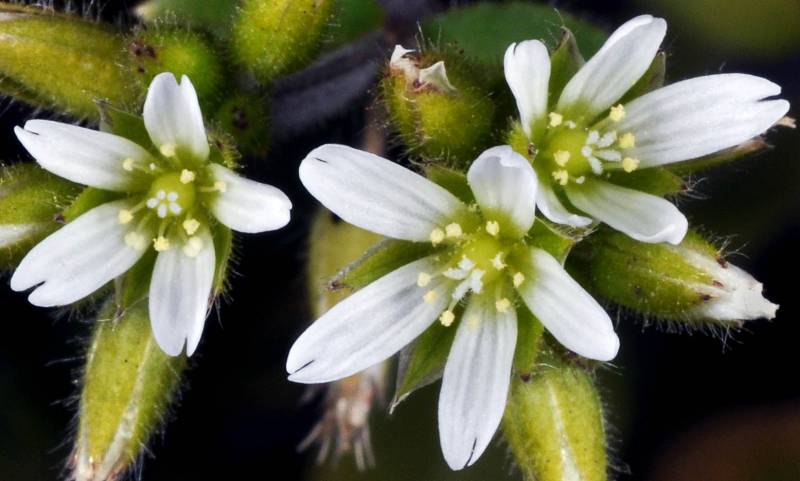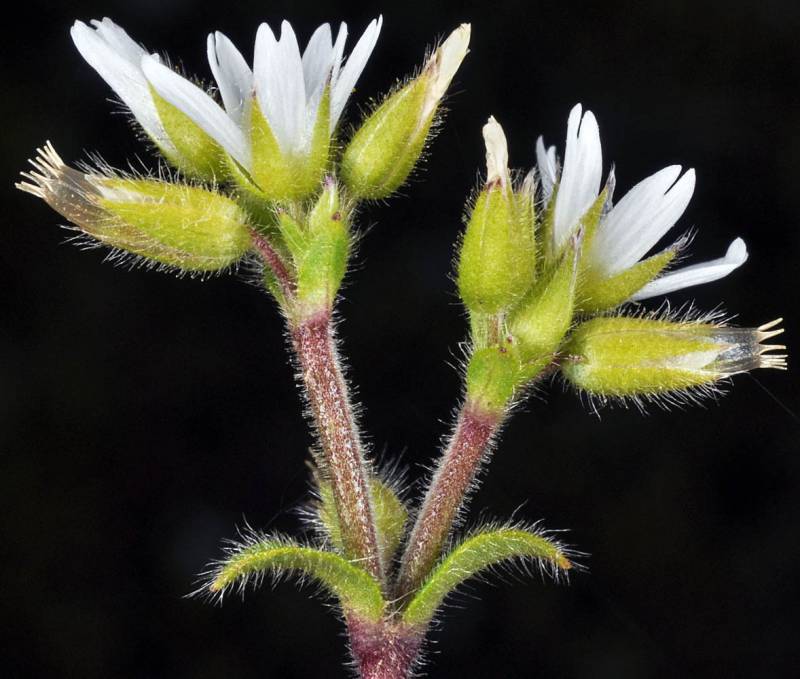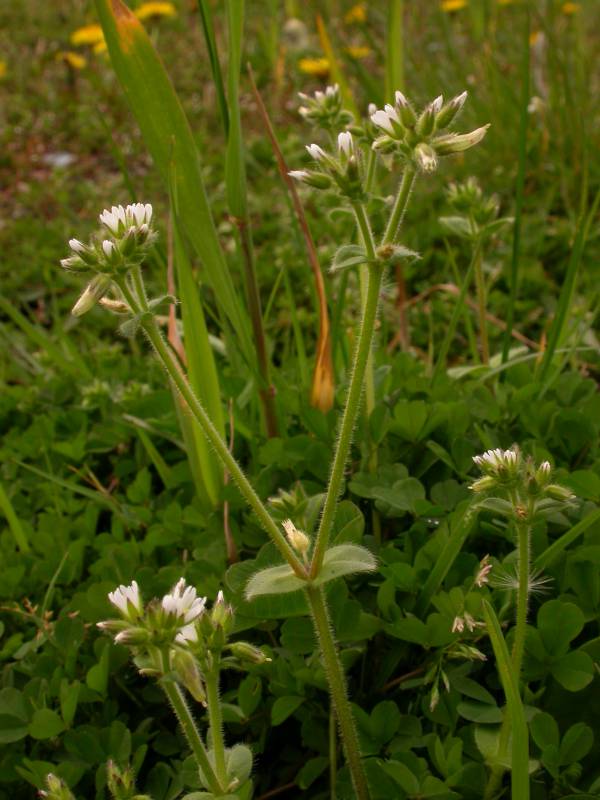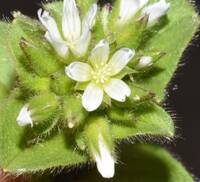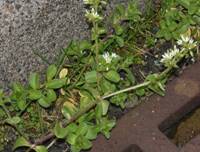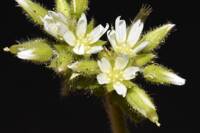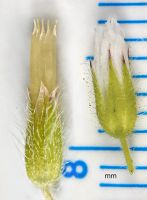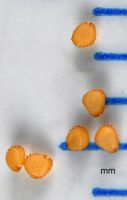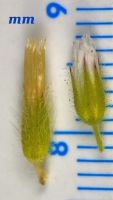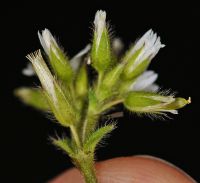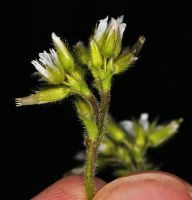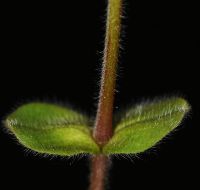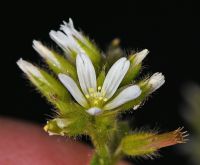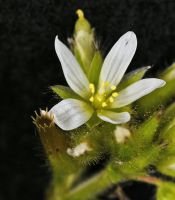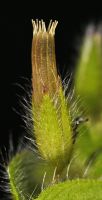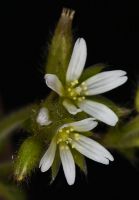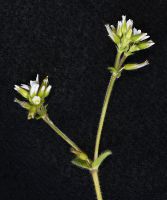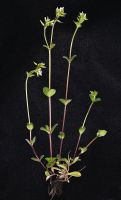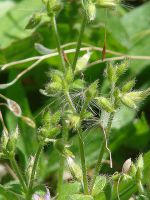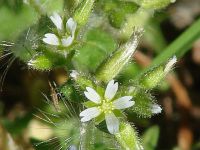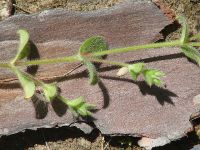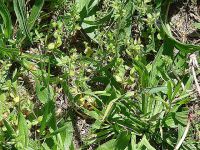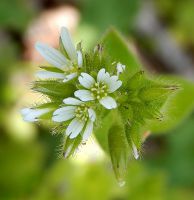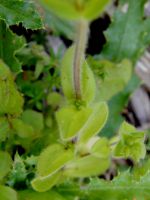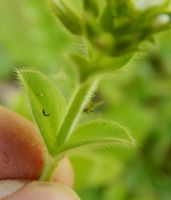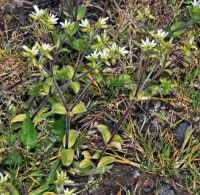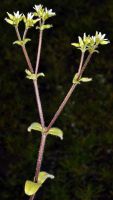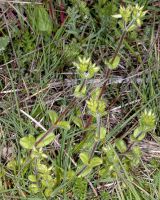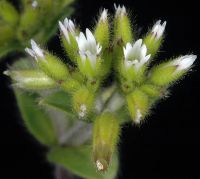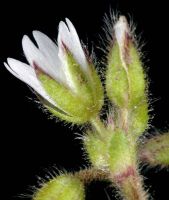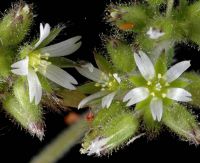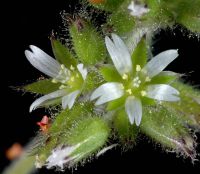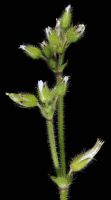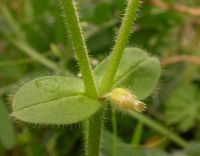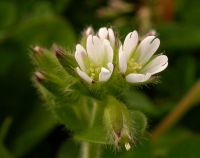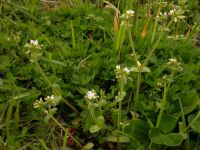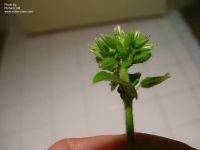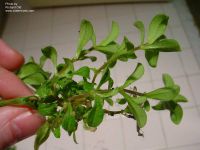Distribution: Widely distributed on both sides of the Cascades crest in Washington, but more common west of the crest; Alaska to California, east across most of North America to the Atlantic Coast.
Habitat: Prairies, balds, fields, roadsides, wastelots, and other disturbed areas at low to middle elevations.
Flowers: March-July
Origin: Introduced from Europe
Growth Duration: Annual
Conservation Status: Not of concern
Pollination: Bees, flies
Copiously glandular-pubescent annual, the 1-several erect to decumbent stems branched, 1-3 dm. long.
Basal and lower cauline leaves spatulate to obovate, opposite, 8-15 mm. long and up to 8 mm. broad, tapered to the petiole; middle and upper cauline leaves larger, ovate to obovate, sessile.
Flowers numerous, in tight clusters in an open inflorescence; pedicels shorter than the calyx; sepals 5, 4-5 mm. long, stiff-hairy; petals 5, white, equal to the sepals; stamens 10; styles 5.
Capsule cylindric, twice as long as the calyx.
Publication: Fl. Env. Paris, ed. 2. 226. 1799.
Cerastium fulvum Raf.
Cerastium viscosum L. [HC]
PNW Herbaria: Specimen records of Cerastium glomeratum in the Consortium of Pacific Northwest Herbaria database
WA Flora Checklist: Cerastium glomeratum checklist entry
OregonFlora: Cerastium glomeratum information
E-Flora BC: Cerastium glomeratum atlas page
CalPhotos: Cerastium glomeratum photos

